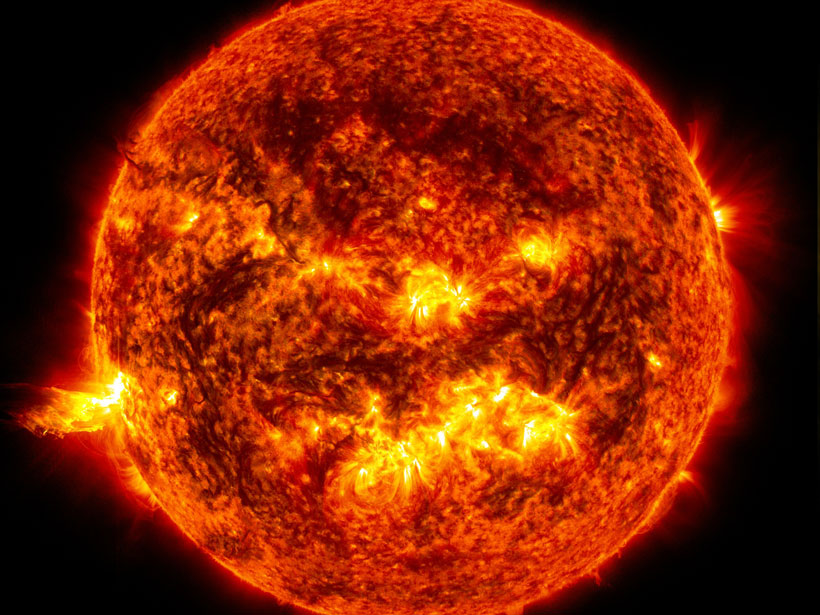Source: Earth and Space Science
At first glance, the Sun’s burning heat seems to be unvarying. To explain the differences we experience, we tend to point to cloud cover, humidity, or the dynamics of our atmosphere. However, as the Sun progresses through its 11-year cycle of activity and quiet, as well as its 27-day rotation, the radiation it bestows on Earth changes.
An instrument called the Spectral Irradiance Monitor (SIM) aboard the Solar Radiation and Climate Experiment (SORCE) satellite monitors how much solar energy bathes Earth across a range of wavelengths from the ultraviolet to the near infrared. Knowing the distribution of solar energy across this spectrum can help scientists track where on Earth this energy is absorbed, a key factor in climate change estimates. However, exposure to harsh solar radiation at shorter wavelengths causes the satellite’s instruments to degrade, meaning researchers must adjust for the aging equipment to keep recording accurate measurements.
In pursuit of this accuracy, Mauceri et al. compared three methods of correcting SORCE SIM measurements: SIM version 25, Multiple Same-Irradiance-Level, and SIM constrained version 2 (SIMc V2). They then compared the results of these corrective methods with four independent measurements of solar energy and with two solar energy models.
The researchers found that solar energy measurements from the three correction methods matched most closely for—and were therefore most accurate for—visible light wavelengths. They also observed some surprising variation in near-infrared wavelengths, where instrument degradation is small and thus a high level of agreement between the three methods was expected. The discrepancy may be a result of artifacts from corrections made for shorter wavelengths.
The team found the greatest variation among measurements at high-energy ultraviolet wavelengths, which also cause the most damage to the instruments. Earth is more sensitive to variations in the amount of ultraviolet radiation it receives than to variations of other wavelengths. To ensure accurate climate models, future correction methods must thus maintain accurate short-wavelength observations. Of the three correction methods for SORCE SIM data, the researchers recommend SIMc V2 for most applications, but they noted that continued research and development are still needed. (Earth and Space Science, https://doi.org/10.1029/2019EA001002, 2020)
—Elizabeth Thompson, Freelance Writer
Citation:
Thompson, E. (2020), How accurate are our measurements of the Sun’s energy?, Eos, 101, https://doi.org/10.1029/2020EO142637. Published on 13 April 2020.
Text © 2020. AGU. CC BY-NC-ND 3.0
Except where otherwise noted, images are subject to copyright. Any reuse without express permission from the copyright owner is prohibited.

